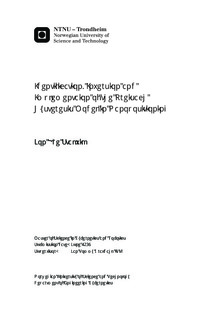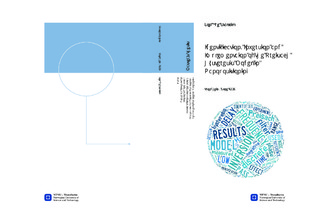| dc.description.abstract | Atomic force microscopes offer the possibility for imaging a sample topography with accuracy in the nanometer scale. This kind of performance is impossible without actuators enabling a certain accuracy. A frequently used actuator in such nanopositioning applications is the piezoelectric actuator which, although precise, exhibit the unwanted phenomenon of hysteresis. Hysteresis is recognized as the main nonlinearity in the piezoelectric actuator, and introduces severe control issues for accurate positioning.To compensate for hysteresis an accurate model of the nonlinearity has to be identified. A discrete and a piecewise-continuous model, based on the Preisach operator, is identified with a constraint least squares method. An algorithm for computing the output of the continuous model is proposed and outlined together with a solution for the discrete model. The general approach for control of hysteresis is to create a right inverse of the identified model. Since the Preisach operator does not have an analytical inverse, this is done numerically by a closest match algorithm. These algorithms are described based on previous literature.In order to achieve a well designed model for the Preisach operator, the input function has to be thoughtfully designed. It is pointed out that to achieve a persistently excited input signal, the number of reversals has to be sufficient compared to the discretization level of the implemented Preisach operator. Additionally, effects from systematic errors in the signal loop, such as negative phase due to low pass filtering, time delay, creep and actuator dynamics, has to be minimized. It was shown that negative phase in the signal loop can invalidate the identified models.Both the discrete and continuous model was shown to describe the hysteresis nonlinearity. To reduce the step-size of each discrete value, a higher discretization level can be applied to the discrete model. The inverse models were simulated to verify the inversion algorithms, followed by results from testing the inverse signal. The inverted signal based on the discrete method showed need for interpolation between the discrete levels, while the continuous inverse exhibit higher frequency components that causing vibrations due to resonance dynamics. An input signal consisting of the same amount of reversals as the discretization level was shown to give a valid identified model. Furthermore, increasing the number of reversals was shown to continue improving the accuracy. The effect of negative phase, from low pass filtering and time delay, was tested, and changes in the distribution of the Preisach weights were shown. Such effects can cause significant errors in identification of hysteresis models, especially if the reference frequency is subject to changes. | nb_NO |

